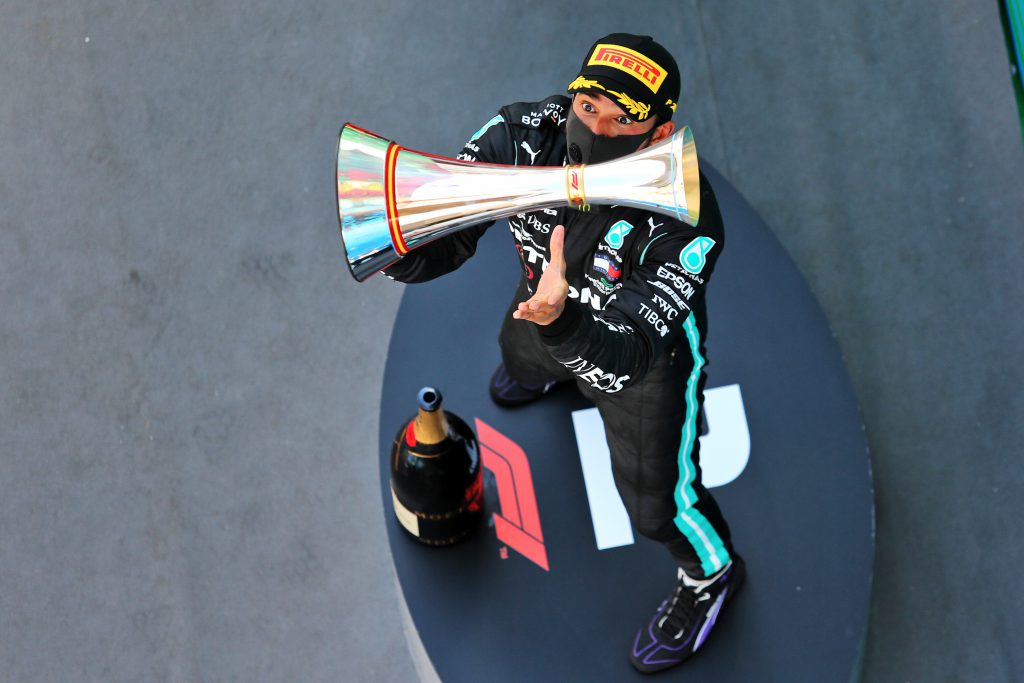Up Next

Arrow straight off pole position, other cars fading from his peripheral vision, unencumbered into Turn 1 after that long, long run down there.
That beautiful start was when the clouds of concern first began to dissolve in Lewis Hamilton’s head. But they hadn’t cleared completely.
Spain in August made for one of the hottest grand prix in living memory. Some of the younger drivers swear they’d never been so hot in the car. Valtteri Bottas even noted that the black overalls from the recent Mercedes rebranding made the problem worse.
The most significant thing about the temperature wasn’t discomfort so much as the effect it might have on tyre behaviour. Especially after what had transpired in the two Silverstone races.
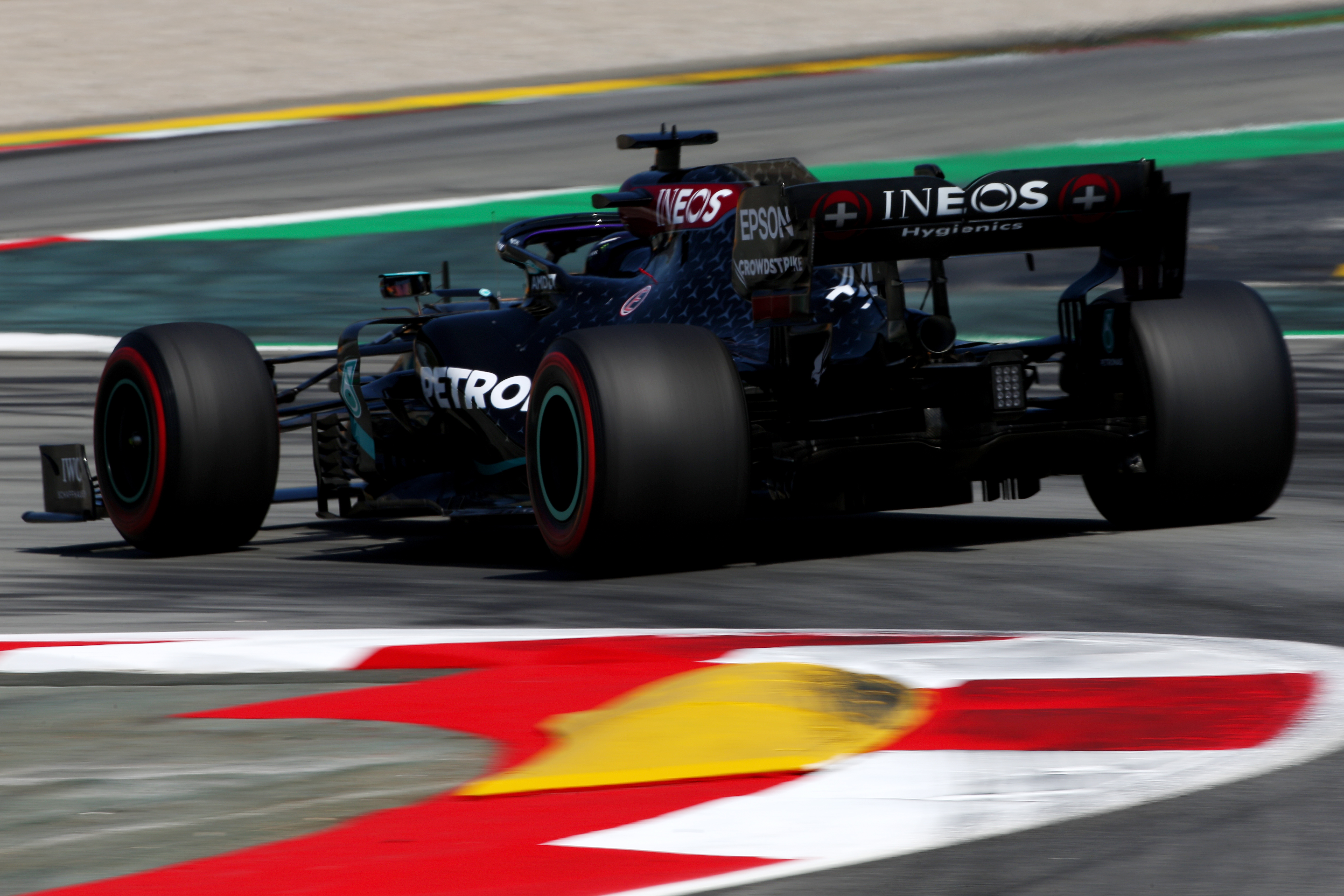
The Mercedes may have had 0.7s on the Red Bull in qualifying, but the Friday long runs suggested there was very little difference in feasible race pace. Feasible, as in the pace you’d need to run this race in a high downforce car in order not to encounter excessive, strategy-destroying, thermal degradation.
Friday had at least suggested to Mercedes that the blistering problem wasn’t going to repeat here, although Hamilton had reservations even about that, pointing out that it had looked OK at the same stage at Silverstone.
But, back to the hardest C1/2/3 range of Pirelli compounds and with Barcelona posing quite a different sort of tyre challenge – lower peak lateral Gs but longer duration corners and less cooling-off time down the shorter straights – it was going to be about how fast you could run without letting the tyres get hot enough that you destroyed your strategy. No one knew, really.
“Even catching traffic I was gaining time rather than losing time. That never happens!” :: Lewis Hamilton
All that everyone knew for certain was this was going to be a race of extreme tyre management. But even though it was a different tyre limitation to that of either Silverstones, it was still quite possible that Max Verstappen’s Red Bull could run a harder pace than the two Mercedes while keeping those tyres away from that critical temperature threshold. Which was one of the clouds in Hamilton’s head.
What if? What if Verstappen could run at a pace to be within undercut range around the first of what, for the fast cars, was always going to be a two-stop race? Then he’d force Mercedes into running too long a middle or final stint and at some point he’d find the clear air to express that better tyre usage and inevitably emerge ahead.
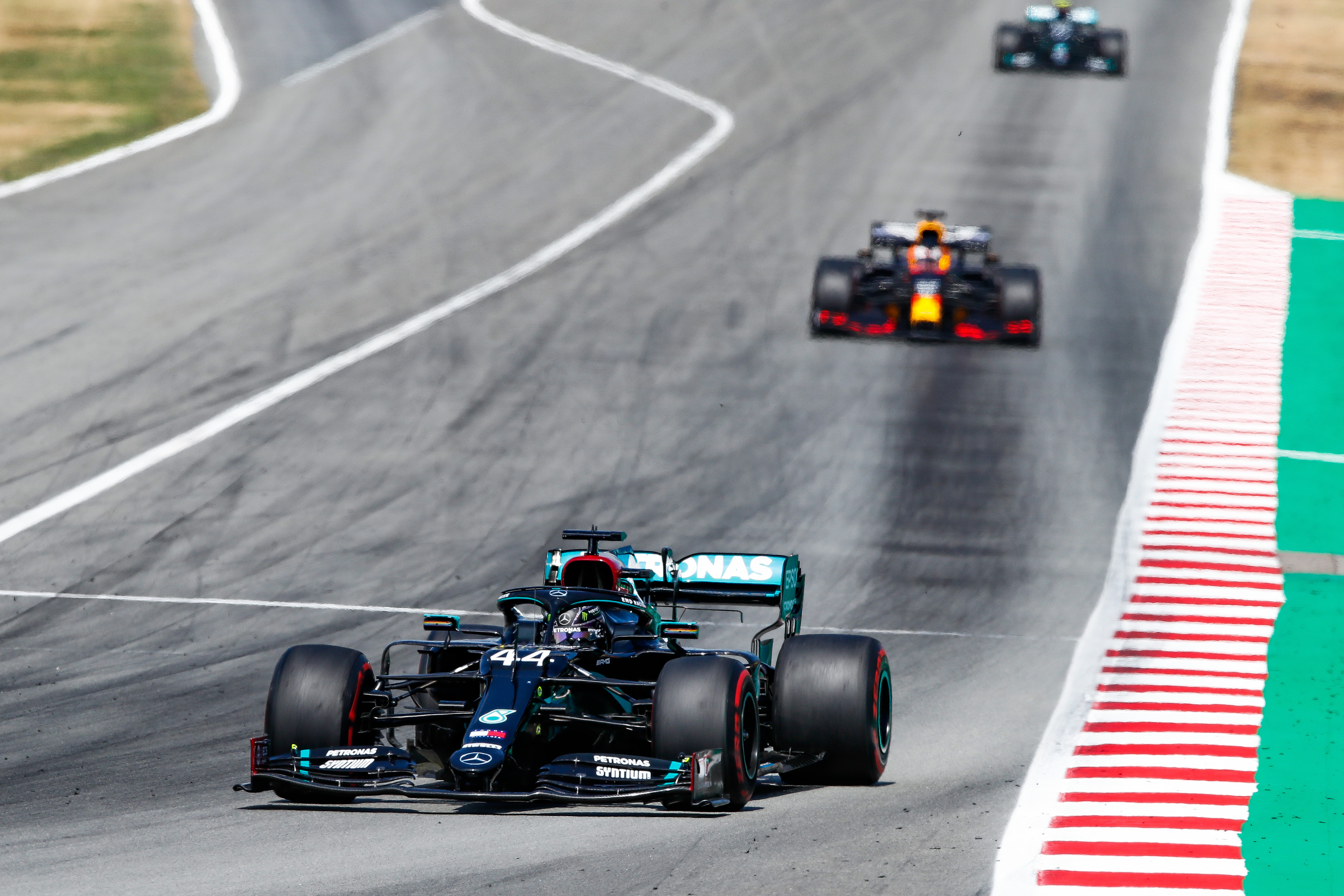
Mercedes had been intensely analysing the Silverstone tyre data at Brackley, trying to understand the mechanism that landed it in trouble there. There was no silver bullet explanation though and all it could do were make a few precautionary refinements – to set-up and driving details. Such as? “I’m not going to tell you that,” smiled Hamilton.
But the smiling was afterwards, in the post-race high of a drive in which he felt was as close to perfection as he’s ever got. It all began with that perfect start and just kept getting better from there.
“We all try for perfection but today for me I was ecstatic. I didn’t even realise when it was the last lap. I was like a horse with blockers on…
“Weekend in/weekend out, we move on but I need to appreciate this moment because I don’t know when I’ll have another. I’ll definitely have a glass of wine tonight to celebrate.
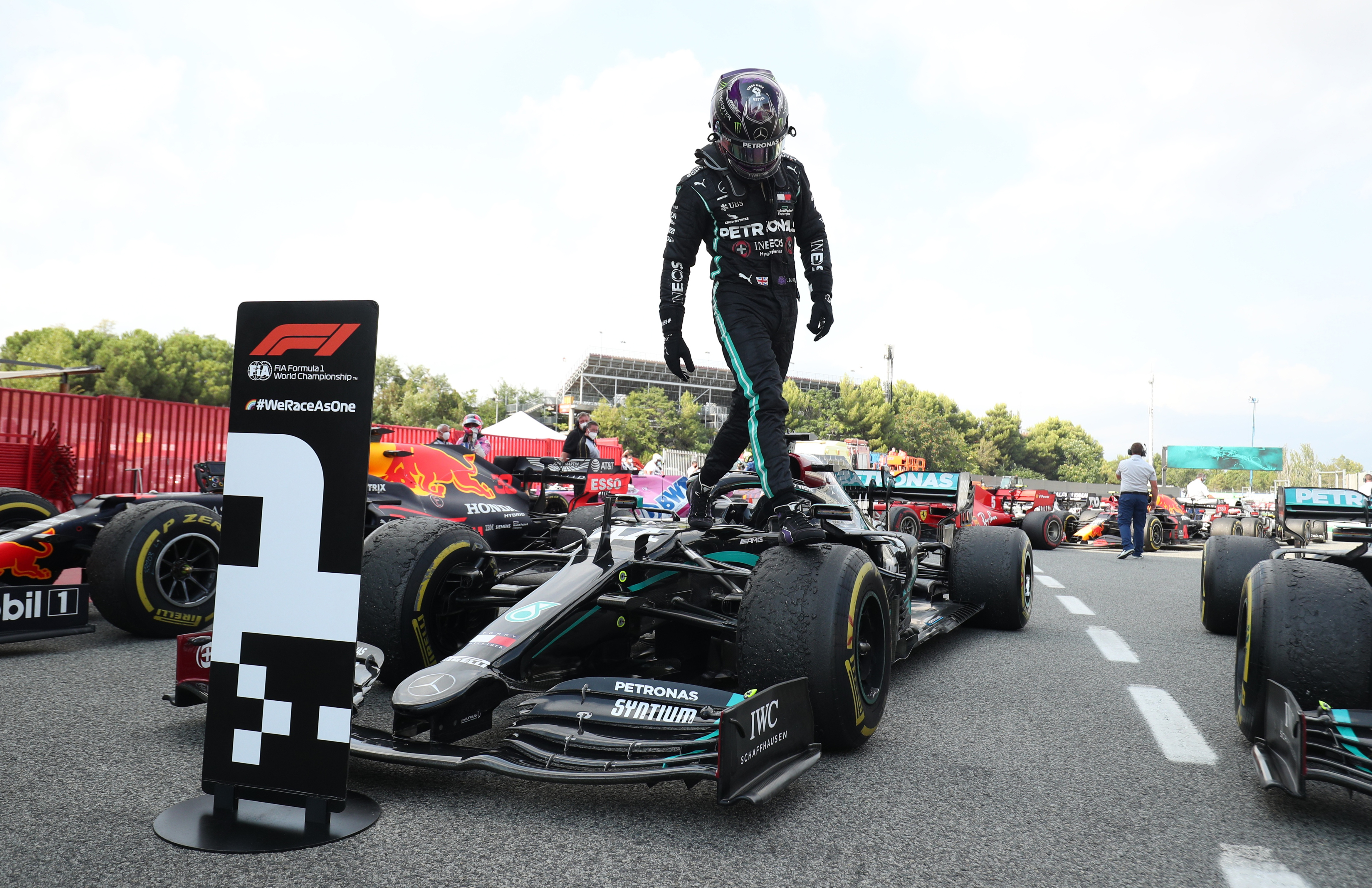
“I can’t quite pinpoint why, but I felt like I was in a clear zone, there was a clarity. I’m sure I’ve had it before, but I don’t know even how to get into that zone, to get in that space.
“I felt fantastic in the car, lap after lap. I was in the perfect zone, the zone I dream of being in.
“Even catching traffic I was gaining time rather than losing time. That never happens! I was very centred in my core. I am going to try to get there every day.”
The first soft-tyred stint was loosely set for between 15-20 laps. There was no tyre offset to Verstappen for Hamilton to worry about this time. The hard was too slow to be considered, so the soft was good for up to 25 laps, so race day was always going to be a mix of soft and medium and everyone had got through to Q3 using the soft, on account of a significant one-lap advantage over the medium.
“When Verstappen started complaining about his tyres, I wasn’t” :: Lewis Hamilton
The perfect start – “I hit it so sweet” – was tempered by the inconvenience that it was Verstappen, and not team-mate Valtteri Bottas, who’d emerged in second.
Bottas made a bad start worse by swooping left to try for Hamilton’s tow only to find Verstappen already in that space, thereby opening up a gap to his right which he didn’t adequately defend from Lance Stroll’s fast-starting Racing Point.
It was all Bottas could do to fend off Sergio Perez in the other pink car around Turn 3. By the time he’d found a way by Stroll at the end of the straight, beginning lap five, Verstappen was already 2.5s up the road and generally following Hamilton’s every move.
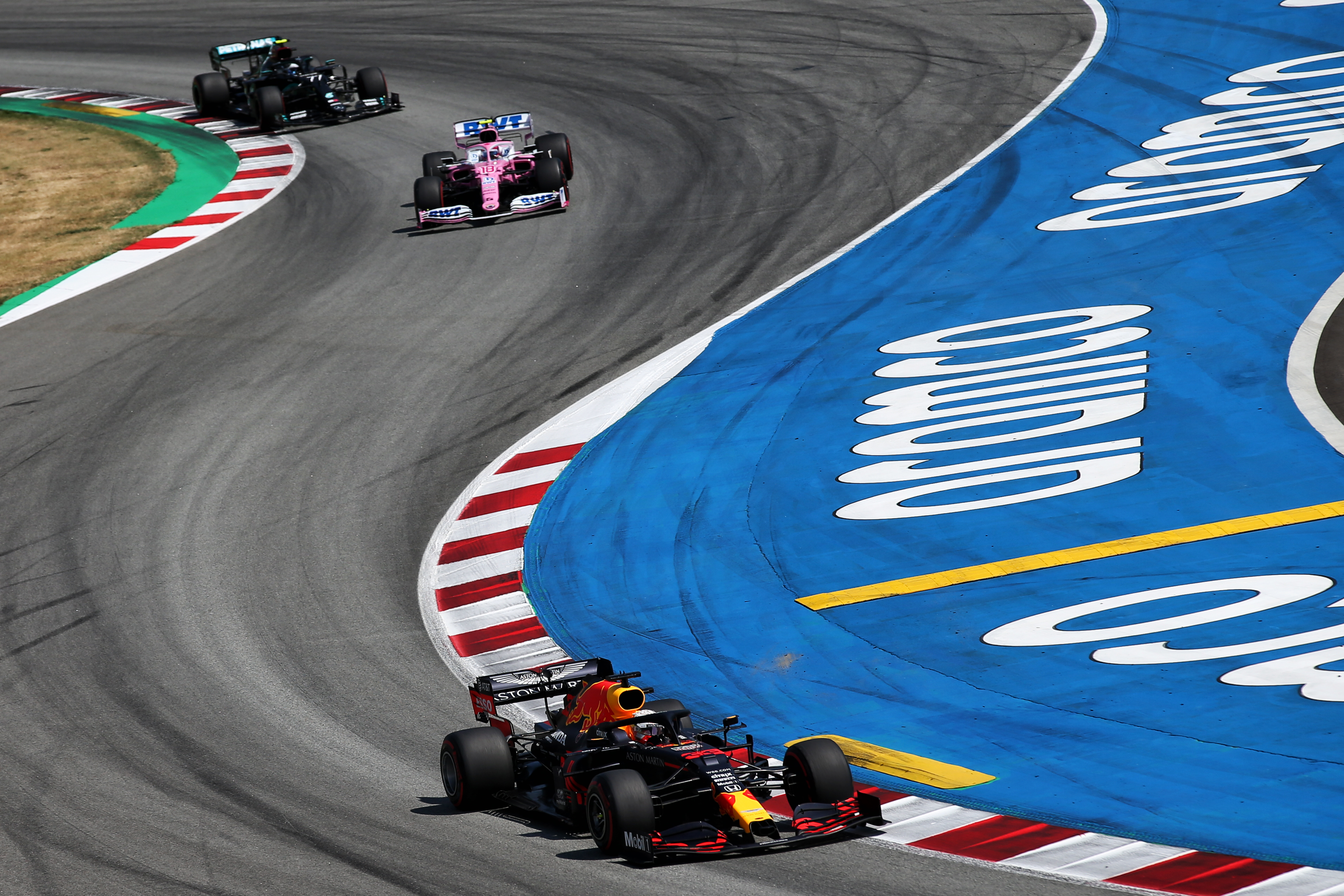
That meant less than it looked, though. Because for the first 10 laps all Hamilton was doing was maintaining position without straining the tyres, allowing the tread to wear a little before leaning too hard on them.
It was a cycling pursuit-sort of preparation to the sprint that was to come. Only when Hamilton made a break for it would we find the true competitive comparison between them.
Everyone else was doing the same, even those (such as Sebastian Vettel and the Renaults) who had started on mediums. So despite their gentle pace, the lead trio quickly built up a big gap to the closely-bunched Racing Points, Alex Albon, Carlos Sainz Jr, Pierre Gasly and Charles Leclerc. No overtaking here. It’s just not an overtaking circuit – especially when you’re trying to look after tyres.
Lap 10. That’s when Hamilton nailed it for the first time. He began lapping 1.5s faster than anything he’d been doing before. Verstappen tried to go with him, but fell around 0.5s per lap short.
“That’s when I thought, ‘Ok, that’s it for the day,’” said Max, realising he had no answer, that this wasn’t like last week, that it was now just about a probably doomed effort at staying in front of Bottas.
As Verstappen faded from Hamilton’s mirrors, so the leader’s day really began to become something special as the zone beckoned and he dived into it. The radio confirmed Mercedes was extending his stint length.
“I could see where [Verstappen] was at,” said Hamilton. “When he makes comments on the tyres I’m aware of it. But I was focused on just doing my job.
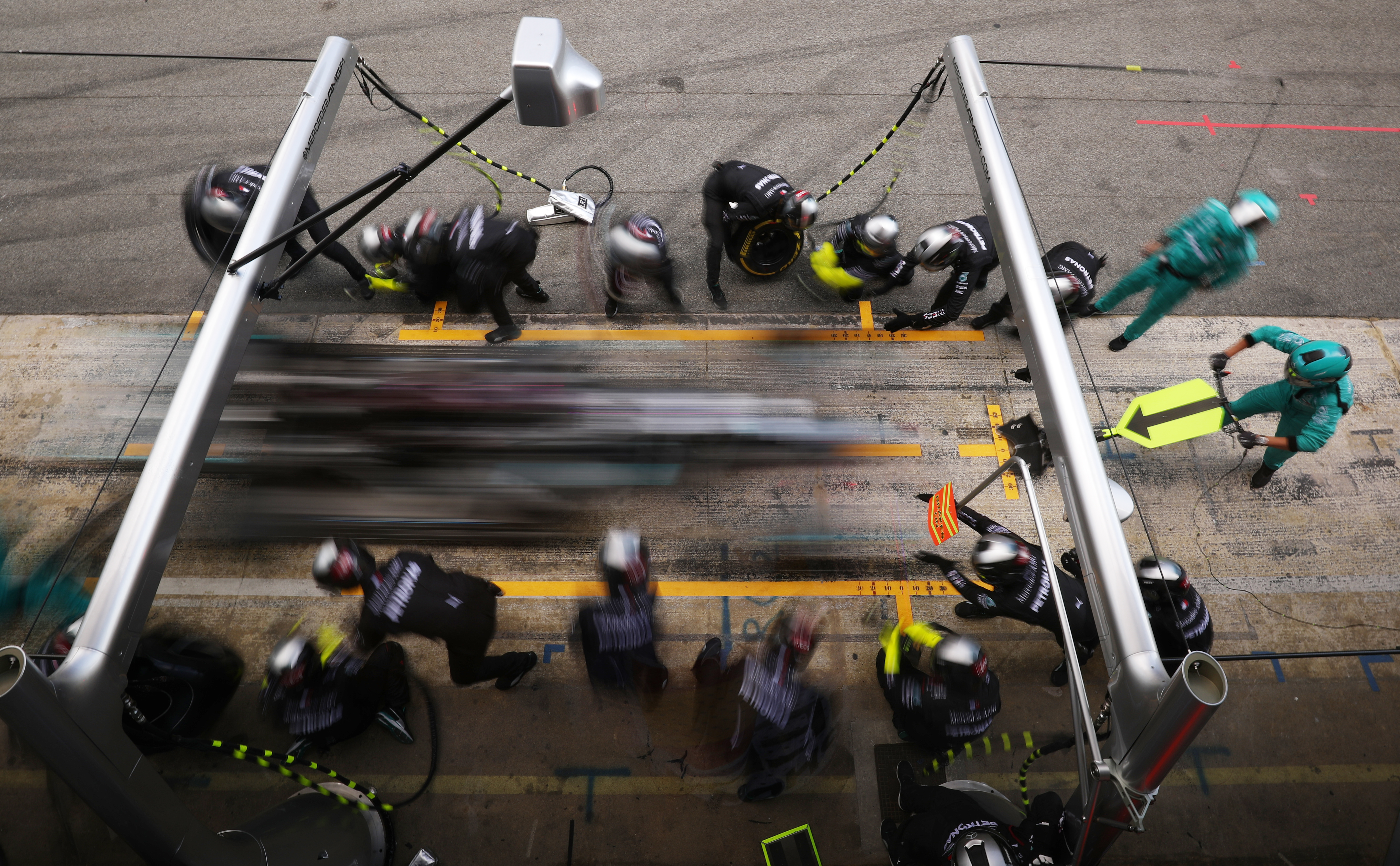
“When he started complaining about his tyres, I wasn’t. I knew that I was going to extend my strength and he stopped. I was going to try and push a little bit further. But we ended up covering him.”
Bottas was closing on the Red Bull. He’d got to within under 2s by the 20th lap (Hamilton was by now almost 8s up the road) and so Red Bull brought him in to fend off the undercut. It took 1.9s to fit a set of mediums and sent him on his way for the middle stint.
There was a big enough gap between the two Mercedes that they could afford the double shuffle on the 23rd lap. The stops weren’t quick (4.3s and 3.1s respectively) but they didn’t need to be. Hamilton emerged still comfortably leading, Bottas’s deficit to Verstappen increased by a couple of seconds.
Some other race was happening a long way back. The Racing Points – Stroll still leading Perez – were trying for the one-stop. So they ran long, for 27 and 29 laps respectively, as long as possible so they could get out still ahead of the desperate train just behind in which Sainz was starring, using his second-stint soft tyres to put a pass on Albon’s early-pitting hard-tyred Red Bull.
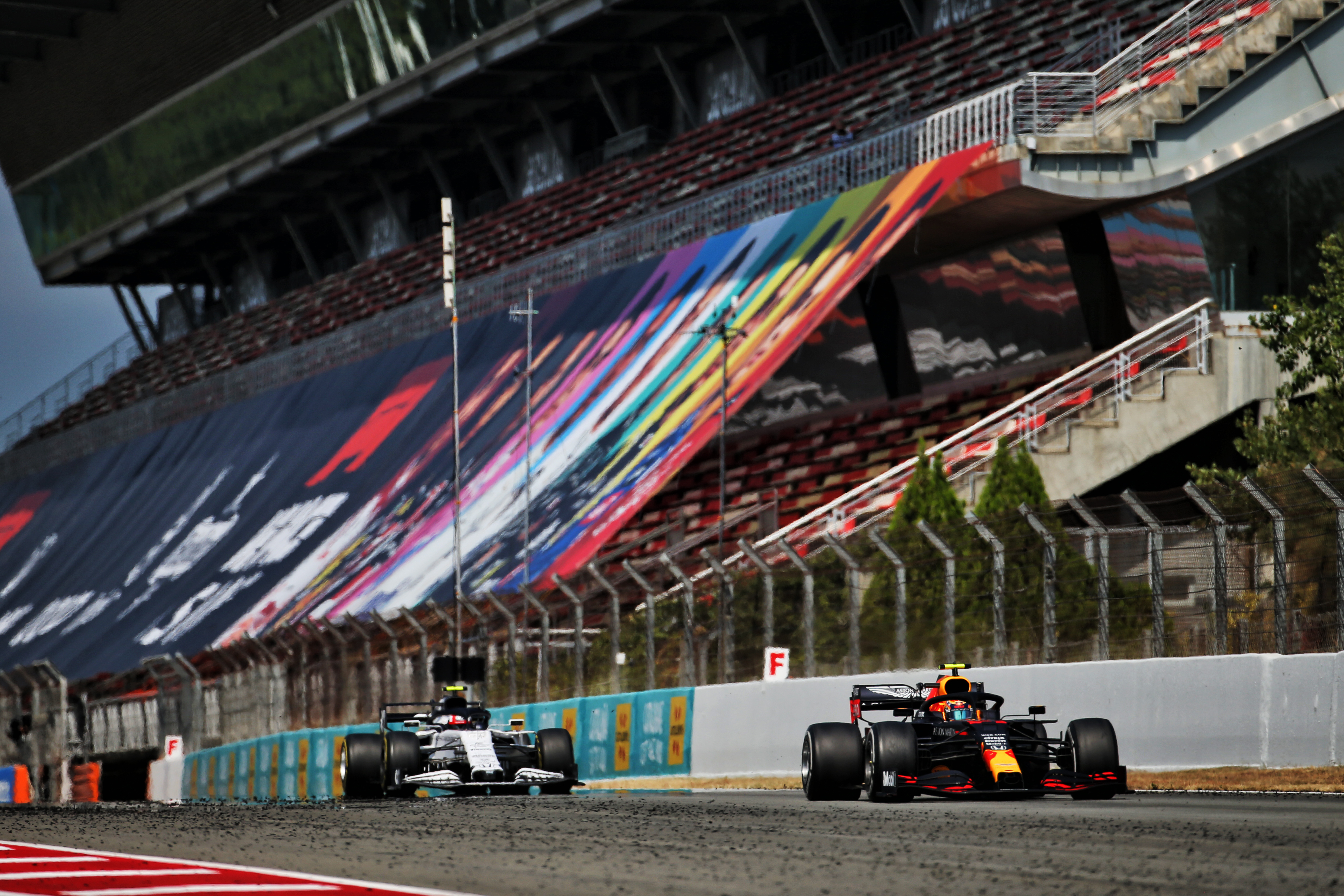
This was a terrible race for Albon. It had begun going wrong at the first corner, where in backing off to avoid hitting Bottas, he’d lost momentum and places. Trying to put that right just used up his tyres, so he was brought in early and fitted with a set of hards, the idea being to convert to a one-stop.
But it was so early (lap 17 of 66) that he emerged among the tailenders, losing him further time and he used up even the hard tyre to such an extent he was pitted again. He’d eventually finish sixth, behind Sainz and lapped by his team mate. He seems lost for answers right now.
Behind the Sainz/Albon struggle ran Gasly, Lando Norris and Leclerc, the latter another committed to a one-stop and pulling it off quite nicely until the Ferrari’s engine suddenly lost electrical power after he whacked one of the chicane kerbs a little hard.
The irony of Gasly driving so strongly just as Albon seems to be in a spiral of Red Bull angst wasn’t lost on anyone
The sudden power-cut spun the Ferrari around and initially it looked like there might be a safety car as Leclerc couldn’t get it going again. He undid his belts before trying one last time – and this time it fired up. He drove it belt-less for a couple of laps before the team agreed to retire the car.
Sebastian Vettel in the sister car was a couple of places back, having worked hard to fend off Daniil Kvyat in the early laps. Having qualified 11th, Seb had been able to start on the mediums but hadn’t been intending to one stop and had pitted on the 28th lap for a set of softs.
To his surprise, he was much happier with the feel of the car on these. He was able to sustain a reasonable pace long enough that one-stopping came onto the radar. This would involve getting a set of softs to do 38 laps, but the Ferrari doesn’t induce the thermal-deg in the tyres in the way the faster cars do.
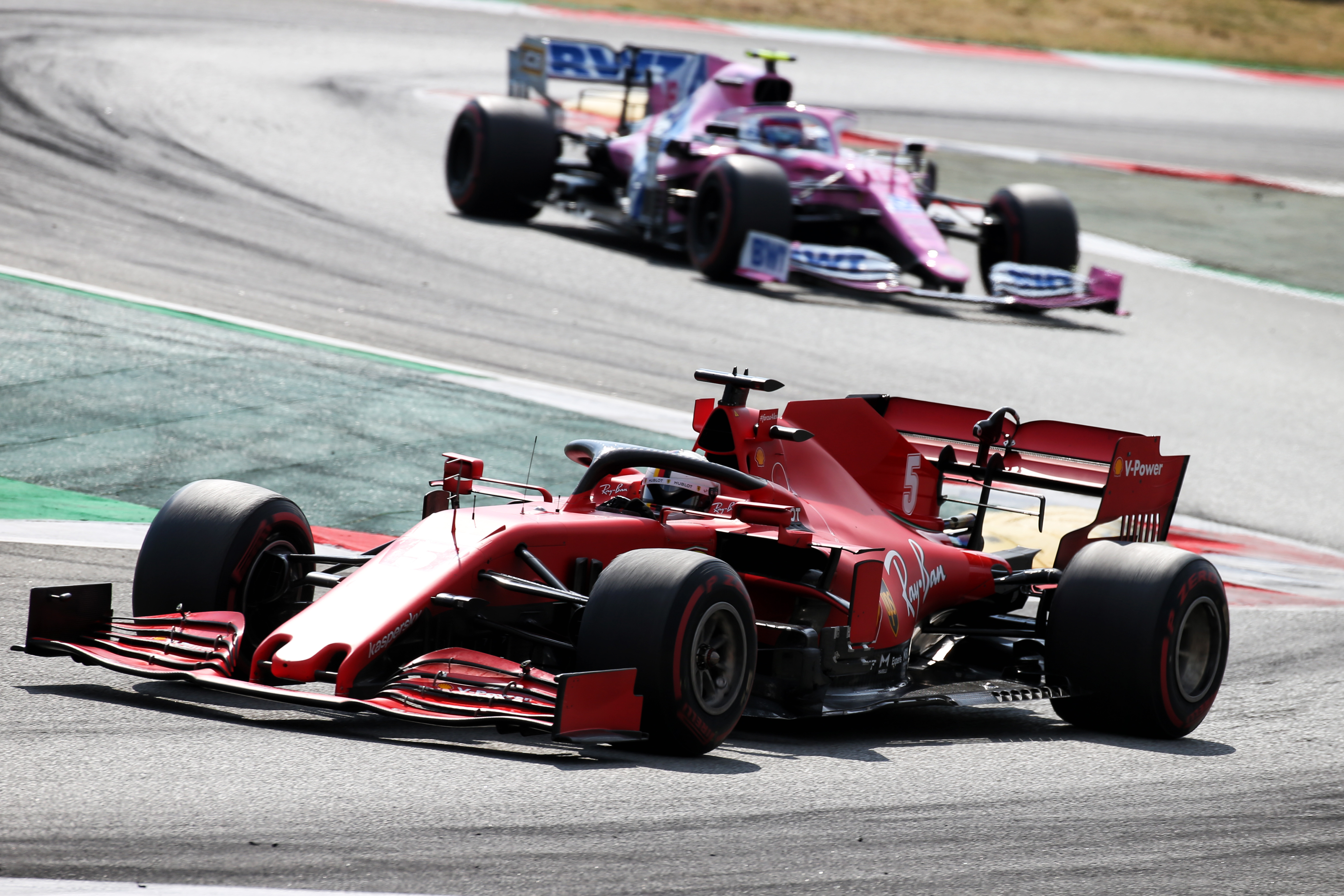
After a characteristic bit of Vettel-Ferrari pitwall niggle, he was instructed to stay out, having been pushing for three laps thinking he was about to come in. It probably wouldn’t have made much difference.
Sainz exited his second stop not far behind and on new rubber was able to force his way by for sixth, leaving Vettel to successfully fend off Albon. This was a great performance from Sainz, who was able to apply a bit of late pressure to the Racing Points.
Without it being clear if the marginal one-stop would work, Racing Point had baled Stroll out of it, but left Perez on it, neatly splitting its options – and separating them on-track too after they came uncomfortably close on one occasion.
Perez stayed ahead on the road, but received a 5s penalty for not obeying blue flags quickly enough as Hamilton came to lap him. Seemed a bit harsh. It enabled Stroll to take fourth in the official results.
Hamilton at that point was just enjoying his zone, so far clear that he could contemplate a free late stop if he so wished. Verstappen had made his second stop on the 41st lap from 10s behind Hamilton but 11s in front of Bottas.
Mercedes tried now to give Bottas a decent tyre offset to the Red Bull for the final stint, running him seven laps longer and then fitting a set of new softs. They didn’t work.
The Mercedes habitually runs the front softs a bit too hard on thermal deg tracks and here it seemed so again. Verstappen stepped up the pace just enough, judging things perfectly and Bottas never got within range. He got the fastest lap point, which he made sure of with a penultimate lap switch back to fresh mediums. But like Albon, Bottas cut a dejected figure afterwards.
Mercedes had planned putting Hamilton on the soft the lap after Bottas. ‘No,’ he told the pitwall. ‘Don’t pit me on the soft. Put me on the medium.’ He was right, of course.
Gasly drove strongly all weekend for AlphaTauri, just as he has all season. The irony of this just as Albon seems to be in a spiral of Red Bull angst wasn’t lost on anyone.
The Renaults – 11th and 13th for Daniel Ricciardo and Esteban Ocon, sandwiching Kvyat – were just a little off the pace all weekend, their one-stopping strategies insufficient to rescue them.
Kimi Raikkonen convincingly won ‘Class C’ in both qualifying, where he got the Alfa into Q2, and the race, where he was very feisty in overcoming Kevin Magnussen’s Haas.
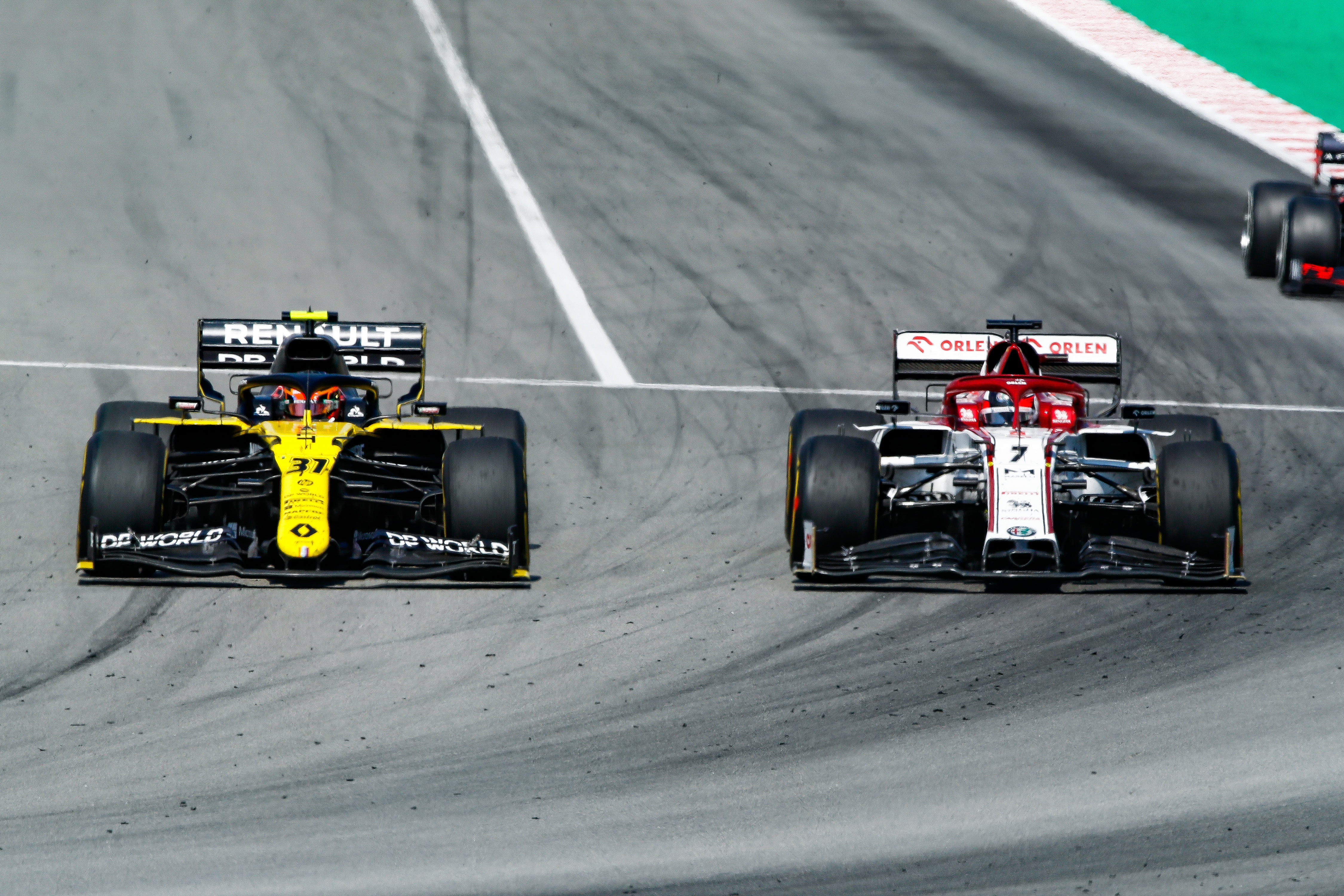
Just behind, Antonio Giovinazzi fought his way past both Romain Grosjean (later to spin after attempting a Vettel-like long stint on softs) and George Russell’s Williams. Nicholas Latifi brought the other Williams home ahead only of the limping Grosjean.
All just background noise and colour to Hamilton’s trance. Which was all the more magical for him for being so unexpected.
It wasn’t a flat-out race, but this was a virtuoso performance all the same, in its combination of exquisite timing and combination of pace and tyre management.
It may have looked less than it was – which was a subject the winner also addressed, reiterating his belief that “we really need to put a lot of pressure on Pirelli for the future” so that tyre management races such as the one he performed so perfectly in Spain aren’t part of drivers’ lives in the next-generation rules.
“For 2022 we need a better tyre, we need a tyre that gives us more grip, better safety,” he said.
“And enables us to drive closer to cars and give the fans better racing. Right now, we’re managing [pace] to a serious extent. And I don’t think that’s what the fans want. That’s not what a racing driver wants.”


